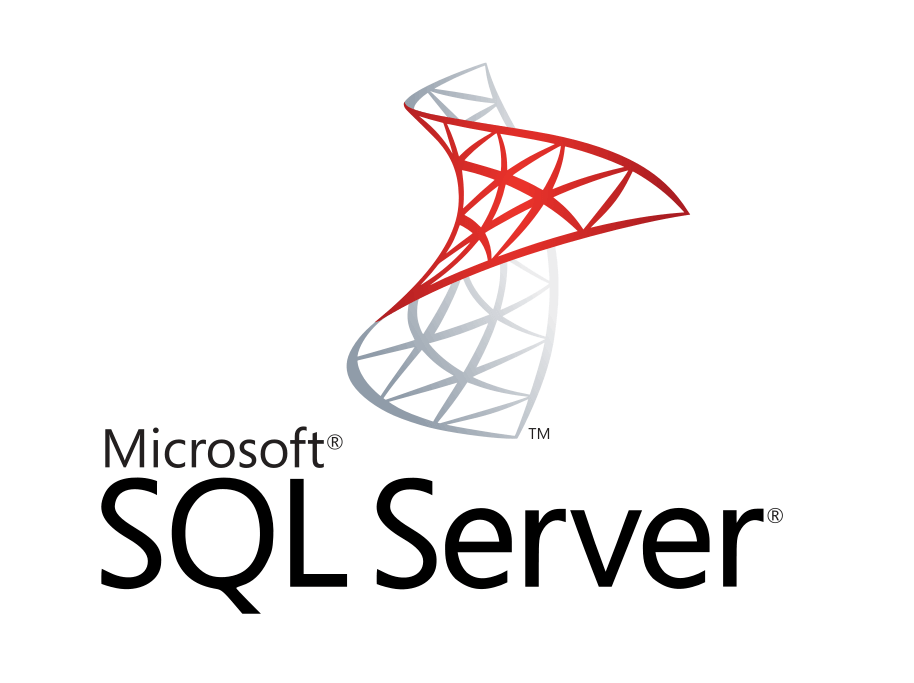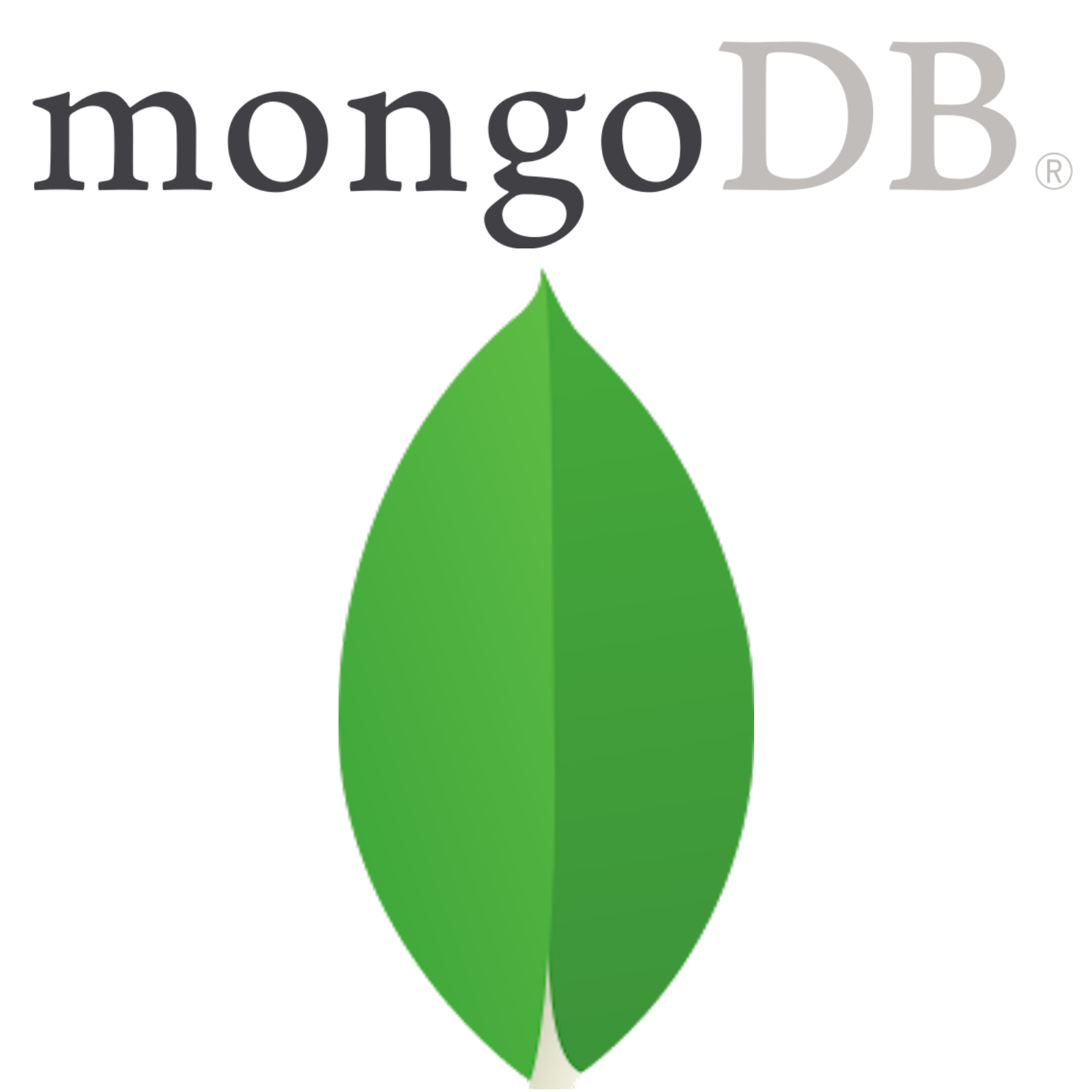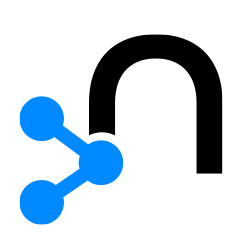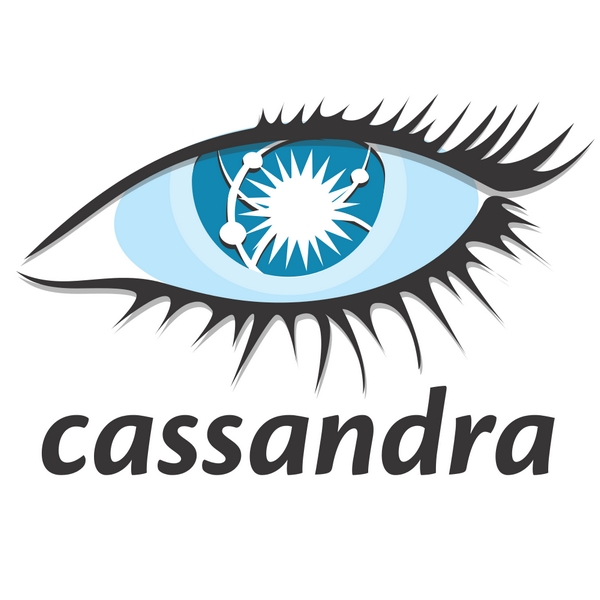Database tools power just about every application you can think of. It could be a social media giant storing user information or a spooky hacker on the dark web storing your personal and financial data.
Most companies today need some kind of database, but it’s not always easy to know which one would best fit your needs. They started out as sets of punch cards, but are now monstrous databases capable of storing petabytes of information.
That can make it pretty tough on a new user looking for a database software solution for their business. But there are three database types we see most frequently: relational databases, document databases and graph databases. There are myriad additional NoSQL database solutions, but let’s focus on these popular choices.
They not only range in purpose, but price as well. They can be outrageously expensive or free to use. Free and open-source database tools are typically more appealing to the everyday small business and app creator, so we’ve outlined some of the best ones, according to user reviews on G2 Crowd.
Best Free Database Software:
To help small businesses this list: Best Free Database Software. Using reviews from real users, our list of free database tools is ordered by highest G2 Score as of November 20, 2017.
BEST FREE RELATIONAL DATABASES
These are some of the oldest and most common databases around today. Oracle released the first fully functional one in 1979, but today there are hundreds of proprietary and open-source options available.
Just about all relational databases utilize the SQL language for querying objects and related information. But some are web-based, others are not. Some are cross-platform, others are not.
MYSQL | MICROSOFT SQL | POSTGRESQL | |
|---|---|---|---|
| License | AGPL version 2 | Commercial | BSD |
| Cloud-Based | No | No | No |
| Server OS | FreeBSD, Linux, OS X, Solaris, Windows | Linux, Windows | FreeBSD, HP-UX, Linux, NetBSD, OpenBSD, OS X, Solaris, Unix, Windows |
| APIs | ADO.NET, JDBC, ODBC | OLE DB, Tabular Data Stream (TDS), ADO.NET, JDBC, ODBC | native C library, streaming API for large objects, ADO.NET, JDBC, ODBC |
| Language Support | Ada, C, C#, C++, D, Delphi, Eiffel, Erlang, Haskell, Java, JavaScript (Node.js), Objective-C, OCaml, Perl, PHP, Python, Ruby, Scheme, Tcl | C++, Delphi, Go, Java, JavaScript (Node.js), PHP, Python, R, Ruby, Visual Basic | .Net, C, C++, Delphi, Java , Perl, PHP, Python, Tcl |
1. MYSQL
MySQL has been around for more than 30 years, and it’s evolved a lot since then. It’s still free and open-source, but there are a lot more GUI and command line tools for managing and accessing MySQL. Those can be found in our Non-Native Database Mgmt Systems software category.
The open-source community edition includes a pluggable storage engine, MySQL replication, partitioning, connectors and a ton of other features. It can run on just about every platform and operating system you can think of.
“MySQL is the tool to go to when looking for a relational database system. Open source, mature, robust and great developer and community support. It works across many platforms and is easy to start working with.” — MySQL Review
The tool has 217 reviews on G2 Crowd, averaging 4.4 out of 5 stars. It was named a Leader in G2 Crowd’s Summer 2016 Grid® for Relational Databases. And it’s used pretty equally across small, mid-market and enterprise businesses and industries.
It powers gigantic apps like Uber, WordPress and Facebook. But for high-volume sites, the enterprise offerings may be better suited to meet your requirements.
2. MICROSOFT SQL

Another staple in the relational database world, Microsoft SQL has been around since the late 1980s and powers other hugely popular companies like NASDAQ, Yahoo and Dell.
Microsoft offers a free “express” version for building smaller applications, which can host up to 10GB of data. It comes with development tools, management tools and Azure backup and restore.
“The database is fast, easy to use, has graphical or command-line management interface, various forms of connection and versatile connectors. In several years I have never had problems with Sql Server. For small workloads, up to 10 Gb has free (express) version with all the features most used.” — MS SQL Review
The reviews for Microsoft SQL span the express, standard and enterprise versions, but it’s currently rated third-highest on our Grid® for Relational Databases. It has 332 reviews, averaging 4.3 out of 5 stars.
The tool has fewer small-business users compared to MySQL. 274 of its 332 reviews come from users at mid-market and enterprise companies. Those span tons of industries, but IT and computer software companies were its largest clients.
3. POSTGRESQL

Though it is not quite as old or widely used, it has still been around for more than 20 years and powers giant corporations like ADP, Fujitsu and Cisco. According to its site, 30 percent of tech companies use PostgreSQL as the core for applications as of 2012.
The tool has a liberal open-source license, which allows users to freely modify code for their specific company’s needs. Some of its core features include table inheritance, nested transactions and asynchronous replication.
“PostgreSQl is a great piece of open-source software that handles the storing, processing and extraction of large spatial and non -spatial datasets incredibly well. I wouldn’t hesitate in recommending this piece of software.” — PostgreSQL Review
PostgreSQL has 126 reviews on G2 Crowd, averaging 4.4 out of 5 stars. It’s definitely more appealing to small- and mid-sized companies, judging by its review distribution, and it spans a ton of industries as well.
It’s currently the sixth-highest rated overall relational database on G2 Crowd, but has the third-highest satisfaction score. It was named a High Performer in G2 Crowd’s Summer 2016 Grid® for Relational Databases.
| FEATURE RATING | MYSQL | MICROSOFT SQL | POSTGRESQL |
|---|---|---|---|
| Query Language | 90% | 90% | 92% |
| Storage | 89% | 89% | 90% |
| Availability | 90% | 91% | 92% |
| Stability | 88% | 90% | 94% |
| Scalability | 78% | 87% | 85% |
| Security | 84% | 89% | 90% |
| Data Manipulation | 87% | 89% | 90% |
ADDITIONAL FREE RELATIONAL DATABASES TO NOTE
Teradata Database — Offers free developer edition that includes a preconfigured database, row-level security and virtual deployment capabilities.
“Teradata is one of the most reliable RDBMS platforms available in the market. Teradata is a powerhouse when it comes to hosting a large data warehouse with greater storage and faster processing power” — Teradata Review
SAP HANA, Express Edition — Offers free edition capable of handling 32GB of RAM. Features include database server, analytics and microservice architecture.
“As HANA is gaining footprints in enterprise landscape, it becomes imperative to consultants to keep them updated with the ever fasting pace of innovation. HANA Express edition provides that opportunity.” — SAP HANA Express Edition Review
BEST FREE DOCUMENT DATABASES
Document-oriented database software solutions, sometimes called document stores, like you’d guess, are used for managing document-oriented data. They’re one of the most common non-SQL, or NoSQL, databases used today.
Unlike SQL database servers, document databases store all data available, not just sets designated by the programmer. This makes them more flexible and dynamic, ideal for web developers managing tons of data that’s constantly changing.
MONGODB | COUCHDB | DYNAMODB | |
|---|---|---|---|
| License | AGPL version 3 | Apache version 2 | Commercial |
| Cloud-Based | No | No | Yes |
| Server OS | Linux, OS X, Solaris, Windows | Android, BSD, Linux, OS X, Solaris, Windows | Hosted |
| APIs | proprietary protocol using JSON | RESTful HTTP/JSON API | RESTful HTTP API |
| Language Support | C, C#, C++, Clojure, ColdFusion, D, Dart, Delphi, Erlang, Go, Groovy, Haskell, Java, JavaScript, Lisp, Lua, MatLab, Perl, PHP, PowerShell, Prolog, Python, R, Ruby, Scala, Smalltalk | C, C#, ColdFusion, Erlang, Haskell, Java, JavaScript, Lisp, Lua, Objective-C, OCaml, Perl, PHP, PL/SQL, Python, Ruby, Smalltalk | .Net, ColdFusion, Erlang, Groovy, Java, JavaScript, Perl, PHP, Python, Ruby |
1. MONGODB

Unlike the common SQL databases, MongoDB is relatively young. It was launched in 2009, but already has more than 30 million downloads, according to its site. Corporations like Expedia, Forbes and MetLife use it to store and manage their sensitive information.
The free and open-source tool functions across platforms and provides drivers for 10-plus languages, including Python, Java and C++. Its core features are indexing, ad hoc querying and high-availability data replication.
“Unlike SQL databases, MongoDB’s document model makes it very easy to develop new software ideas in Java and then making them persistent. Using the Morphia open-source library, we can easily map our Java classes and persist them in MongoDB in the same ‘shape’ making it very intuitive to understand and optimize the data design.” — MongoDB Review
The tool has 168 user reviews, averaging 4.4 out of 5 stars. Only 11 of those are not 4- or 5-star ratings. Most of its users come from IT and software companies but span evenly across company size.
It was the only Leader named in the Spring 2016 Grid® for Document Databases and the only tool in the category with more than 50 reviews.
2. COUCHDB

CouchDB is a few years older than MongoDB, but uses the same file notation format, JSON. It was developed by open-source giant Apache and released in 2005. Some large companies using CouchDB are the BBC, Sophos and Canonical.
It’s completely open source, like almost all Apache tools. Some of its core features are ACID Semantics, offline editing and a distributed architecture perfect for data replication.
“CouchDB is vastly more than just a database – it’s practically a website framework. You interact with it using plain Javascript, JSON, and HTTP for everything. No need to write an API or backend administration tools and you get user management / access control for free. “ — CouchDB Review
The tool has 41 reviews on G2 Crowd, averaging 3.8 out of 5 stars. Almost all of those, 30 out of 40, are from small-business users.
It just barely missed a High Performer rating in the Spring 2016 Grid® for Document Databases. But today it has the second-highest rating in the category.
3. DYNAMODB

DynamoDB is a fully managed offering from Amazon Web Services (AWS) as part of its suite of cloud products. It’s not totally free, and while AWS does offer a free tier with limited capabilities, be warned: If you exceed free-tier usage, you must pay the difference.
The free offering allows applications to handle up to 200 million requests per month, 2.5 million read requests per month from DynamoDB Streams and store 25 GB of data. Most of the paid offerings are scalable depending on application usage.
“DynamoDB allows you to build your software applications without having to worry about scaling your database. My company has dozens of Amazon DynamoDB tables, some of which only perform a few reads/writes per day, and others get thousands of reads and writes per second.” —DynamoDB Review
The tool has 24 reviews on G2 Crowd, averaging 3.9 out of 5 stars. It didn’t make it into last spring’s report, but it’s the third-highest rated product in the category today.
Most users came from small and mid-market companies, with 10 reviews for each. Fourteen of its total reviews came from users in technology-related industries.
| FEATURE RATING | MONGODB | COUCHDB | DYNAMODB |
|---|---|---|---|
| Query Language | 82% | 72% | 60% |
| Storage | 88% | 80% | 96% |
| Availability | 90% | 90% | 94% |
| Stability | 87% | 85% | 97% |
| Scalability | 89% | 79% | 97% |
| Security | 78% | 73% | 91% |
| Data Manipulation | 85% | 70% | 66% |
ADDITIONAL FREE DOCUMENT DATABASES TO NOTE
MarkLogic — Offers a developer-edition for free use with features for storing up to 1TB of data, ACID transactions, REST APIs and more.
“MarkLogic’s support for fully ACID transactions is very rare in the NoSQL market and their reliability is significantly better than anything I’ve encountered in the open-source NoSQL ecosystem.” — MarkLogic Review
RethinkDB — Open-source tool to store JSON documents. Features include real-time updates, dynamic schemas and web-based administration as a free online database.
“I like that RethinkDB is open source, fast and declarative. It has a wonderful built in visualization tooling and works across many different server types.” — RethinkDB
BEST FREE GRAPH DATABASES
Graph Database software solutions are another NoSQL type database that use graph structures for semantic queries. The tools are based on graph theory, where nodes represent data points and they’re interconnected by edges, also called graphs.
Users utilize some kind of non-SQL query language such as AQL, Cypher or Gremlin to retrieve data. There’s no real standard for graph databases as far as queries go, but they can’t use SQL because it doesn’t handle nodes in the same elegant fashion.
ARANGODB | NEO4J | ORIENTDB | |
|---|---|---|---|
| License | Apache version 2 | AGPL version 3 | Apache version 2 |
| Cloud-Based | No | No | No |
| Server OS | Linux, OS X, Windows | Linux info, OS X, Solaris, Windows | All OS with a Java JDK (>= JDK 6) |
| APIs | HTTP API, JSON style queries | Cypher query language, Java API, Neo4j-OGM info, RESTful HTTP API, Spring Data Neo4j, TinkerPop 3 | ava API, RESTful HTTP/JSON API, Tinkerpop technology stack with Blueprints, Gremlin, Pipes |
| Language Support | C#, Clojure, Java, JavaScript (Node.js), PHP , Python , Ruby | .Net, Clojure, Elixir, Go, Groovy, Haskell, Java, JavaScript, Perl, PHP, Python, Ruby, Scala | .Net, C, C#, C++, Clojure, Java, JavaScript, JavaScript (Node.js), PHP, Python, Ruby, Scala |
1. ARANGODB

ArangoDB is probably the most popular graph database used today. It was published in 2015 and fits in a number of categories on our site including graph and document databases.
Its core functionality is divided into three parts for document, graph and cluster datasets. Its graph features include pattern matching, distributed graphs and nested properties.
“ArangoDB is the most versatile database I have ever used. It also is open source, has a strong and growing community, and tremendous technical support. The performance is also stellar and they offer a unique solution to horizontally scaling graph databases.” — ArangoDB Review
It didn’t make the Spring 2016 Grid® for Document Databases. But it’s the highest-rated product in G2 Crowd’s graph database category and the fourth-highest rated product in G2 Crowd’s document database category.
It has 22 reviews, averaging 4.9 out of 5 stars. Eighteen of those reviews fall under the graph databases category. Most of them come from small-business users in technology fields.
2. NEO4J

Neo4j is another open-source graph database, but it’s a little older. It was launched in 2007 and utilizes Cypher, a query language described on its site as “the most efficient and expressive way to describe relationship queries.”
While the graph database makes up the Neo4j core, it offers additional products for analytics, data discovery and development. The database’s core features include high availability, online backup and “whiteboard friendly” data modeling.
“In our research group, Neo4J is also viable because it is open source. We would burn all our research funds in the database along with other solutions.” — Neo4j Review
Neo4j has 30 reviews on G2 Crowd, averaging 4.4 out of 5 stars. Half of its reviews came from small-business users, most of whom work for technology companies.
Many users describe it as lightweight and easy to use. It’s currently the second-highest rated product in G2 Crowd’s graph databases category.
3. ORIENTDB

OrientDB is a relatively young database management solution with support for graph, document, key value and object-oriented database models. It’s open source and supports the Gremlin programming/querying language.
The product’s graph database tools actually supports SQL as well, but other features include JSON libraries, ACID transactions and distributed cluster configuration. An interesting component about this tool, though, is its graph editor for easy visual data manipulation.
“OrientDB is a open source and live database project in github so we can contribute to growing together . we can write modules, functions or report our issues to orientdb project and receive a nice, fast and friendly online support.” — OrientDB Review
It made our Spring 2016 Grid® for Document Databases as a niche product. Now, it’s the sixth-highest rated document database and the third-highest rated graph database on G2 Crowd.
It has 32 reviews, averaging 3.9 out of 5 stars. Twenty-six of those are specifically for graph databases. Most users worked at small- and mid-sized companies in a technology field.
| FEATURE RATING | ARANGODB | NEO4J | ORIENTDB |
|---|---|---|---|
| Query Language | 96% | 86% | 84% |
| Storage | 94% | 82% | 86% |
| Availability | 94% | 84% | 82% |
| Stability | 91% | 84% | 72% |
| Scalability | 92% | 73% | 76% |
| Security | 82% | 61% | 80% |
| Data Manipulation | 95% | 80% | 85% |
ADDITIONAL FREE GRAPH DATABASES TO NOTE
Titan — Open-source tool with elastic scalability, data distribution and multi-datacenter high availability.
“TitanDB solves data analysis on very large datasets stored on HDFS or in datasets already stored in Apache Cassandra that can be queried without big problems all will take advantage of a commodity cluster capabilities to distribute workload between all machines.” — Titan Review
Cayley — Open-source tool built on Freebase and Google’s Knowledge Graph. Features include multiple backend stores, modular design and RESTful API.
“We used it to house fairly stable connections that we needed to traverse/lookup quickly but would have taken many expensive/disk io heavy joins on our Postgres instance. The latency of those queries was greatly reduced.” —Cayley Review
OTHER FREE DATABASES
Relational, document and graph databases are three of the more common database types available. But others types include object-oriented, operational, key-value and wide-column databases.
And that’s just a few of them. There are a ton to choose from and most people who choose NoSQL are looking for faster implementation time, flexibility and reduced data retrieval times. These are some free tools that don’t fit into some of our larger database categories.
HIVE
Hive is almost a data warehouse, but it has a SQL-like interface to help users query data using the HiveQL language. It’s built atop Apache Hadoop, a big-data processing filesystem.
Some of the core features include a metastore, driver and compiler. It’s typically used to give structure to data already being stored and enabling traditional data mapping.
“The main purpose of using Hive is to building reports and do analysis of data that is stored in the Hadoop file system. As for now it is the only one framework that can be used by all most popular BI tools to read the data from the HDFS.” — Hive Review
Hive has 27 user reviews on G2 Crowd, averaging 4.2 out of 5 stars. Most of those came from larger companies, which makes sense since it’s typically used to aid big-data processes.
Some users gave it poor ratings, citing its slow speed and complexity. But it seemed polarizing since many people said it significantly improves their big-data processing capabilities.
ELASTICSEARCH
Elasticsearch fits somewhere between a search engine and a database, but I’m including it since many people use it as a NoSQL datastore. It’s built on Lucene, an information retrieval library from Apache.
Several large companies use it to power datastores and search components such as GitHub, Facebook and Adobe. The tool aggregates large datasets and helps users identify trends and patterns within datasets.
“Elasticsearch is open source, it just works out of the box, you throw some documents in elasticsearch and you can search on them. You get started in no time and the documentation is great for the most common of uses. The ELK stack is a great addition for logging.” — Elasticsearch Review
Elasticsearch has 28 reviews, averaging 4.6 out of 5 stars. Reviews are split across company size, with most users landing in the mid-market tier.
Users cited tons of different usages for the tool, ranging from database search to log monitoring. Users repeatedly cited its querying speed and many lauded its simplicity for use and configuration.
CASSANDRA

Cassandra is an Apache-developed distributed NoSQL database system that’s been around since 2008. It’s believed to be one of the most scalable database options to choose from because it handles data across many commodity servers.
The tool was developed at Facebook as an open-source project on Google code. Some features of note are its decentralized structure, replication capabilities and tunable consistency to reduce failover.
“I was very impressed with Cassandra’s amazing fast write ability. I also really came to appreciate the ‘all nodes are equal’ aspect that negates the need for ZooKeeper. Cassandra was simple to install, reliable and robust.” — Cassandra Review
It has 21 reviews on G2 Crowd, averaging 4.1 out of 5 stars. Users spanned across company sizes and technology-related fields.
Reviewers cited usage cases for a variety of purposes from managing API metadata to a range of clustering packages. The speed and reliability were recently cited, but many users said it was difficult to use and not well suited for users working with small datasets.
Costs for many of these products may come up for licensing, support and use with larger datasets, but these tools all provide a free core module of some sort for users to begin working for free.
Visit our Database Management Software Categories to find more open-source and proprietary options for the best database tool to fit your company’s needs.

No comments:
Post a Comment